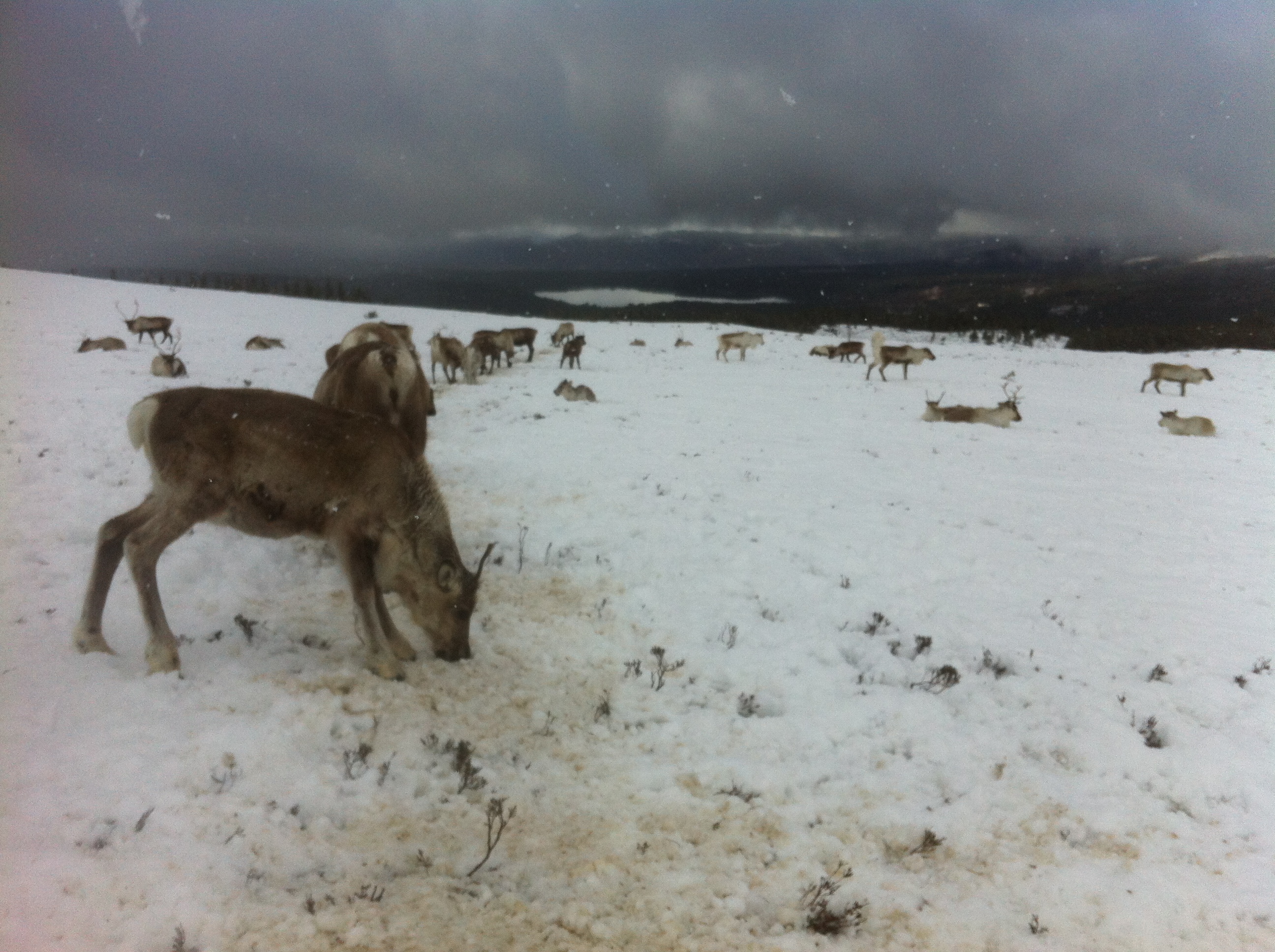Amber was one of the very first reindeer I remember meeting when I arrived back in 2007. At that time she was in the hill enclosure with her 6-month-old son, Go. Both were very tame and friendly, and with her distinctive curved antlers, I found her easy to recognise amongst the sea of reindeer I was frantically trying to tell apart. Amber was also incredibly pretty, with a delicate, dished face and a gentle expression.

Born in 1999, Amber was the final calf from her mum Trout. Trout and her compatriot, Tuna, lived to the grand old age of 18, which as far as I know is the record for any reindeer in our herd (Editor’s note: Lilac now holds this record, surviving to age 19 in 2018). No prizes for guessing the naming theme for their year of birth (1984)! Unlike Trout, who has 11 calves to her name on the family tree, Amber never proved to be such a successful breeding female, with her only offspring being Esme, Oasis, Go and Sambar, or at least those are the only ones that survived long enough to be named (we usually lose a calf or two each year in the summer months when they are very young and vulnerable). Esme managed a better job of breeding than her mum, with 7 calves to her name.


Amber was one of those lovely, gentle reindeer, but a fairly dominant character in the herd – a matriarch, if you will. She was a great reindeer to have around in the winter months when the herd all free-range completely as she so was easy to catch, and therefore an ideal candidate to be put on a halter and used as the ‘lead’ reindeer when needing to move the herd from place to place. I remember Fiona once leading her all the way from Eagle Rock back to near the Ciste carpark (where we were going to take the tour to that day) with her belt looped loosely around Amber’s neck, in place of a halter which we had managed to forget to take with us.
The continuation of Trout’s branch of the family tree now rests squarely upon the shoulders of Amber’s last calf Sambar, who is the sole remaining female in Trout’s descendants, other than Esme’s daughter Okapi. Unfortunately we don’t want to risk breeding from Okapi as she has had a prolapsed uterus a couple of times, so we think it’s better to not risk the chance of this happening again. We want it to stay firmly where it belongs! So Sambar has a lot of expectation on her, and is a lovely reindeer to boot, although a wee bit shyer than Amber was.


Amber herself passed away at some point in 2013, although we never knew exactly when as she just didn’t return from the summer grazing range in the autumn. She was over 14 by this point, so a very respectable age for any reindeer, and we are glad she finished her days out on the hills roaming freely.
Hen





























































